![]()
Valley of the Kings - KV62
tomb of Tutankhamun - XVIIIth Dynasty
|
The
KV62 tomb and circumstances of is discovery were described many times
both in scientifical and popular reports and also parascientifical. In
the description below I will focus on a few selected fragments
concerning this one of most famous structures, the Tutankhamun tomb. It
was discovered by
Howard Carter in November 4th, 1992. Construction of the
tomb is different from contemporary royal sepulchral architecture which
suggests that the tomb primarily belonged to a noble, possibly the high
priest Ai and later was adopted for Tutankhamun. Behind the entrance
stairway the single passage descends to the antechamber with its annex
and, to the right, the sunken burial chamber with the subsidiary room
known as the
'Treasury'.
These last two rooms may have been added at the time of the king's
death. Only the burial chamber received decoration, and this is very
similar to that later encountered in the tomb of Ai. |
||
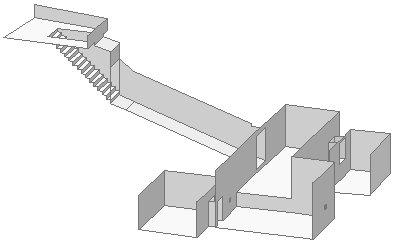 |
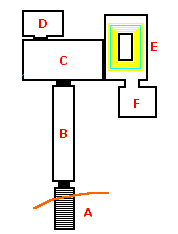
|
|
|
A - steps |
||
|
In
the corridor there were found more than 40 objects and their fragments
such as vessels, lids, inlays, pendants and other jewellery. The
antechamber contained 157 groups composed of 600 to 700 objects
characteristic for typical in New Kingdom royal burial and normally
would have been placed in the pillared section of the burial chamber and
in the anteroom preceding it. Burial chamber, dismantling official on
February 17th, 1923, contained four golden shrines with the
sarcophagus within. The doors of the shrine were located at the eastern
end of the burial chamber. The outermost shrine had no seal - perhaps it
had already been broken by the ancient robbers. Spaces between chapels
were filled with various objects left there after the burial, mainly
pottery, bows, arrows, fans and others. Dismantling the shrines and
opening the sarcophagus and coffins - comprising the bulk of the 88
object-group the burial chamber contained (well over 300 individual
pieces)
- would take almost eight months, from November to May 1925. The
'Treasury'
contained 75 groups of objects. Anubis jackal and the wooden cow head,
boxes, caskets, bow-case, model boats and chariot clutter which lay
along the north wall, and the shrines, two mummified fetuses, further
model boats and the Osiris bed. In
'Annexe'
were found 283 groups of objects – half of the amount of groups from the
entire tomb and well over 2000 individual pieces. |
||
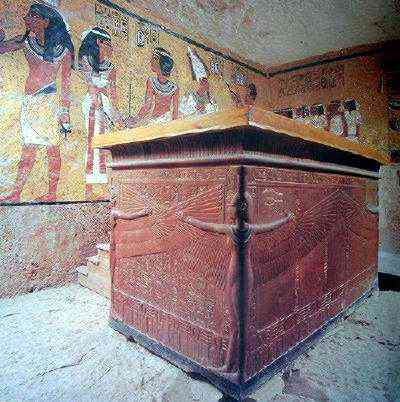
|
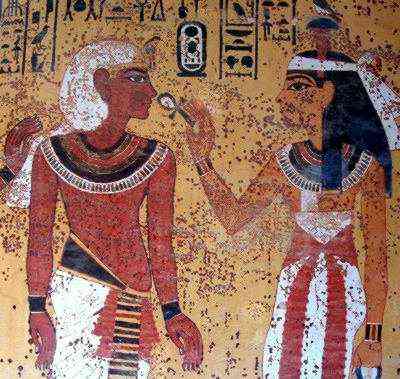 |
|
|
|
||
|
Serological investigations of mummy of Tutankchamun and mummy (?) discovered in the KV55 showed that these two were closely related as both had a common A2 blood-group with serum antigen MN. Apart from king’s mummy there was found in the 'Treasury', a case containing small antropoidal coffins with mummified fetuses of Tutankhamun’s and queen Anchsenamon’s daughters. The smaller one, 25.75 cm long, unfolded by H.Carter, is a ca. 5 mo. old fetus as assessed by Prof. Douglas Derry. The second one is 36.1 cm long. This fetus is also female and according to Derry died in 7 month of gestation. Recent investigations directed by prof. R.G.Harrison of the University of Liverpool proved that the girl died at birth or short before. |
|||||

|
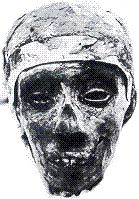 |
 |
 |
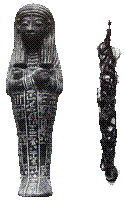 |
 |
|
In
the tomb was found also miniature coffin inscribed with name of queen
Tiji. Inside a coffin-shaped box was found a lock of hair folded in
bandages and belonging probably to Tutankhamen’s grandmother
(?).
Another interesting feature was
dagger
with iron blade
(!)
and finely incrusted with gold handle and sheath
founded by the royal mummy. |
||
|
|
|
|
|
|
||
![]()
|
Copyright © 2000-2013 Dariusz Sitek, Czestochowa - Chicago - Ann Arbor |